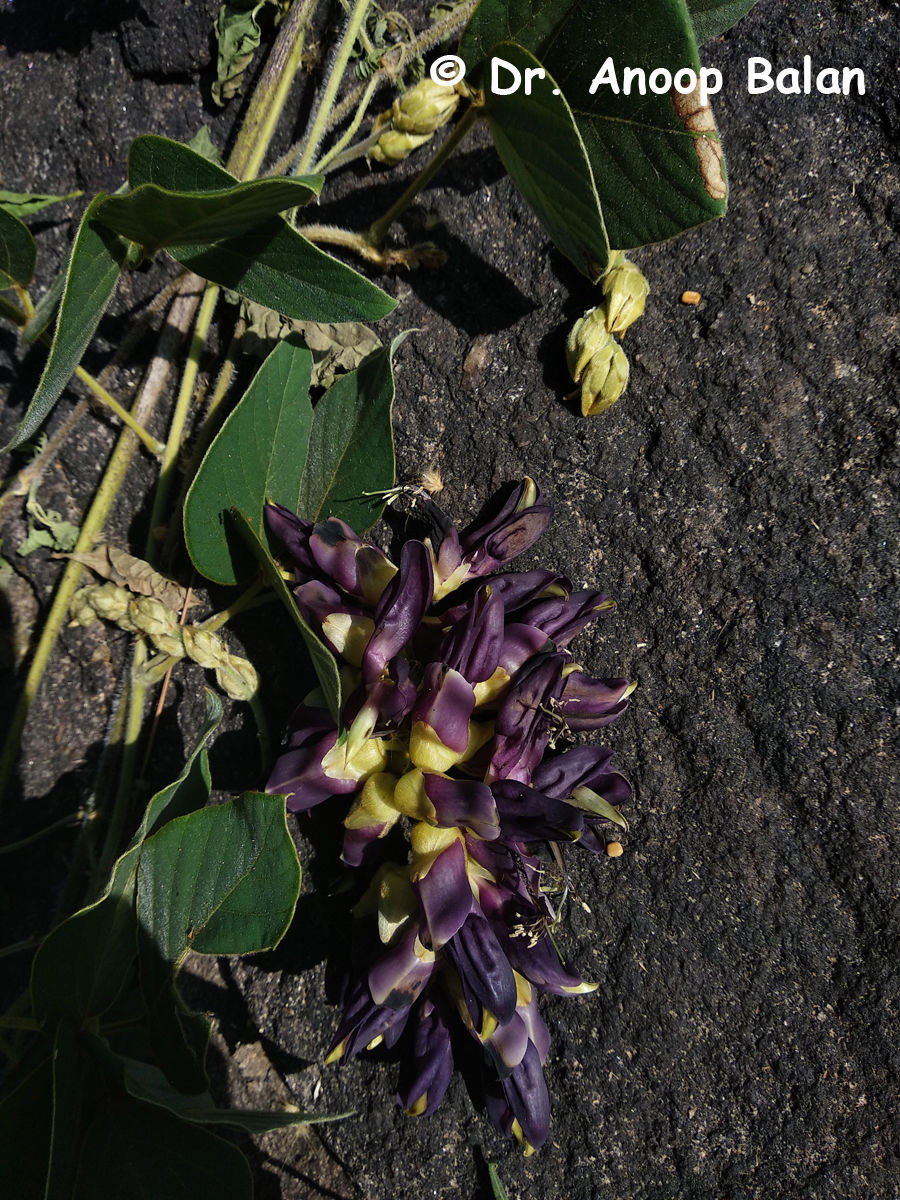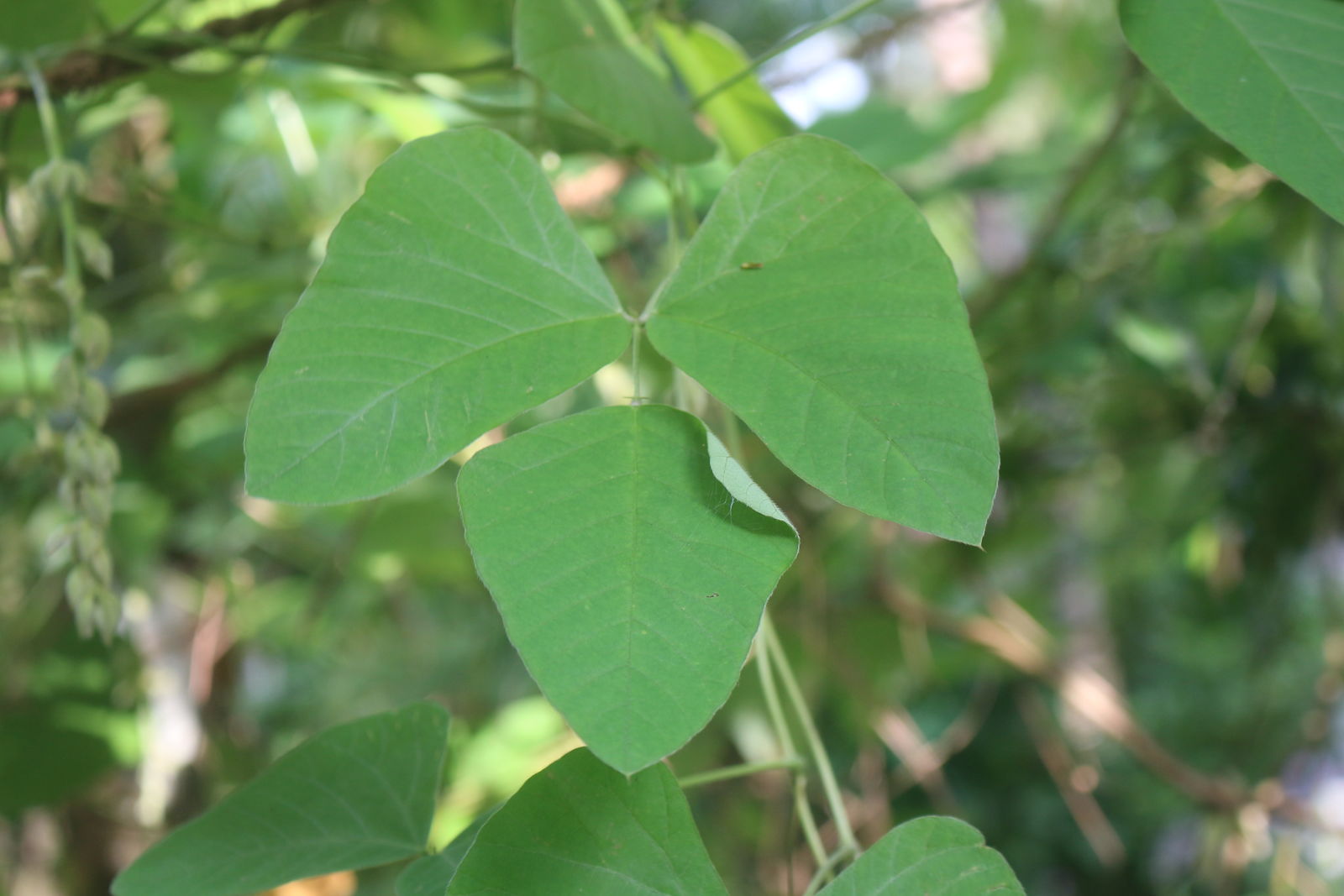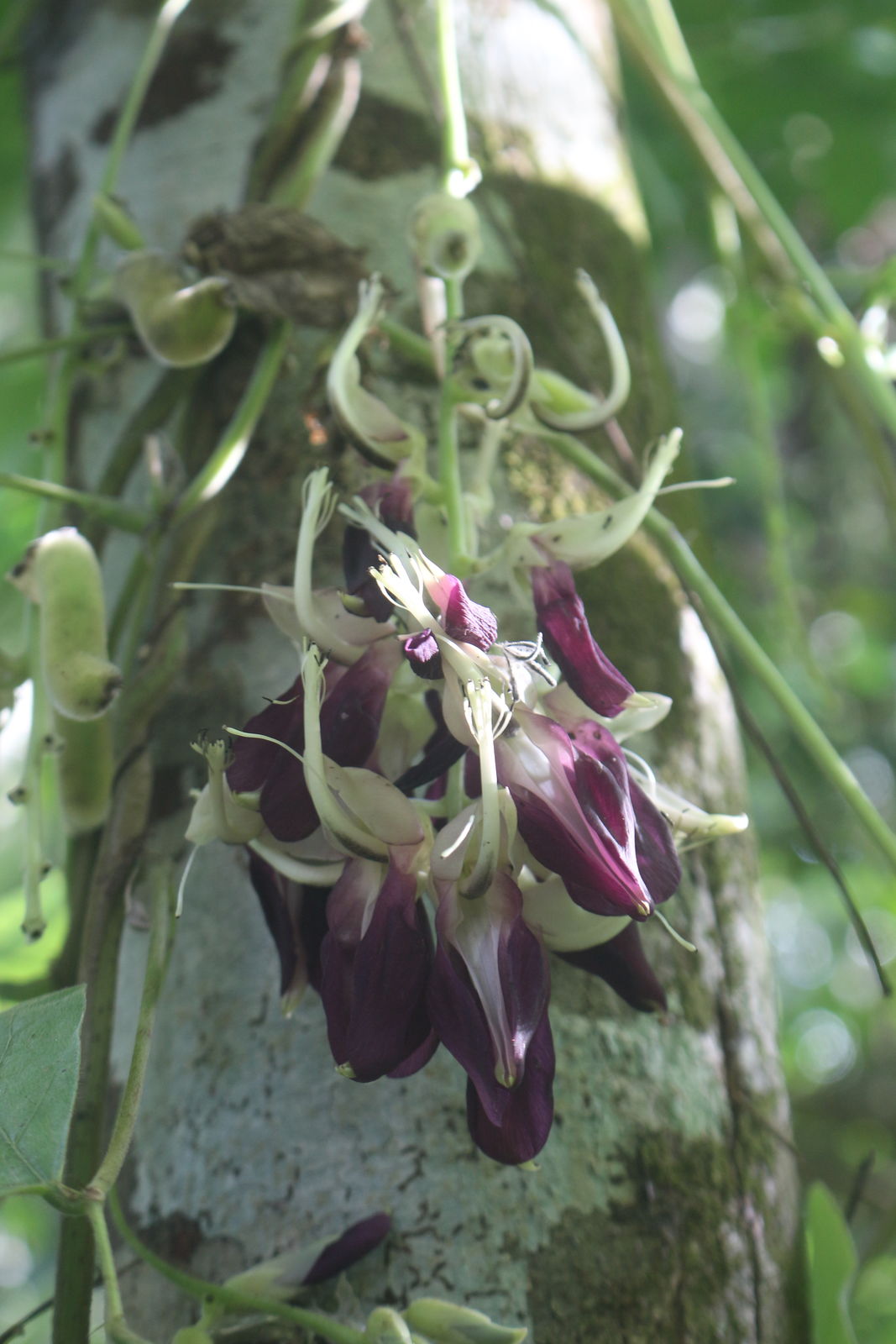Velvet Bean, Cowhage, Cowage
mucuna pruriens
Also known as: ["Velvet Bean","Cowhage","Cowage","Lather Bean","Cowitch"]
Overview
A tropical legume known for its itchy hairs and medicinal properties, native to Africa and tropical Asia.
Benefits & Perks
["medicinal use","wildlife attractant (bees, butterflies, birds)","nitrogen fixing"]
Botanical Classification
| Phylum: | Magnoliophyta |
| Class: | Magnoliopsida |
| Order: | Fabales |
| Family: | Fabaceae |
| Genus: | Mucuna |
| Botanical Name: | Mucuna pruriens |
Plant Characteristics
Basic Information
- Category: Herbs & Weeds
- Suitable Location: trellised or supported structure in garden or large container
- Suitable For:
- Is Weed: No
- Allergenicity: high
Environmental Needs
- Climate: {"temperatureRange":"15–35°C"}
- Hardiness: {"zones":"9–11"}
- Misting: rarely required, only if ambient humidity is very low
- Drainage: Fast-draining to prevent root rot.
- Soil Type: Rich, well-draining soil with organic matter; cactus or succulent mix can be used.
Maintenance Level
- Maintenance Level: moderate
- Toughness Level: moderate
- Pruning Frequency: Annually in late winter or early spring; light pruning can be done as needed.
- Pruning Intensity: Moderate; remove up to one-third of the plant if overgrown.
Care Details
Ideal Sunlight Coverage:
Full sun to partial shade (6–8 hours of direct sunlight daily); adjust for intense summer sun by providing afternoon shade.
Sunlight Tolerance Tips:
Acclimate plants gradually to direct sunlight to avoid leaf burn; protect from harsh midday sun; adjust placement based on indoor/outdoor conditions.
Care Requirements
Care Difficulty
moderatemoderate
Sunlight
full sun to partial shade
Rotate plant for even growth; use sheer curtains to filter intense light; provide shade during peak summer hours.
Watering
every 7–10 days during active growth, reducing to every 14–21 days in dormancy
Water thoroughly until it drains from the bottom; allow soil to dry between waterings; avoid overwatering.
Soil
well-draining, fertile loam with organic matter
pH: Slightly acidic to neutral (pH 6.0–7.0).
Use a mix with good drainage; avoid heavy clay soils; amend with organic matter for nutrients.
Temperature
Warm temperatures (20–30°C); tolerates heat but may require shade in extreme conditions; avoid frost.
Monitor temperature extremes; protect from frost; adjust watering in heat.
Fertilizing
every 4–6 weeks during growing season with balanced liquid fertilizer
Fertilize during active growth; dilute fertilizer to prevent burn; stop in dormant periods.
Propagation
Methods
Stem cuttings or seeds; stem cuttings are faster and more reliable.
Step-by-Step Propagation Guide
- Take a 4–6 inch cutting.
- Remove lower leaves.
- Apply rooting hormone.
- Plant in medium.
- Keep moist and warm.
Best Time: Spring or early summer when the plant is actively growing.
Environment
Warm, humid environment with indirect light; maintain consistent moisture.
Medium
Well-draining potting mix with perlite or sand; can also use water propagation for cuttings.
Hormone
Rooting hormone is recommended to speed up root development.
Timeline
Cuttings root in 2–4 weeks; seed germination takes 1–3 months.
Tools Needed
Pruning shears, rooting hormone, small pots, well-draining medium.
Quick Tips
Use healthy, non-flowering stems; keep cuttings out of direct sun; maintain humidity for faster rooting.
Pruning & Repotting
Pruning Guide
Method
Cut back leggy stems to encourage branching; remove dead or yellowing leaves.
Pruning Plan
Prune to control size, encourage bushier growth, and remove dead or diseased parts.
Tools
Pruning shears, gloves, disinfectant for tools.
Checklist
Disinfect tools; prune during dormancy; remove dead growth; shape as desired.
Repotting Guide
Best Season
Spring, before the active growing season begins.
Pot Size
Increase pot size by 2–5 cm in diameter; ensure good drainage.
Method
Remove plant gently; trim roots if necessary; place in a new pot with fresh soil; water lightly.
Suggestions
Repot every 2–3 years or when roots fill the pot; beneficial for growth and health.
Checklist
Choose appropriate pot size; prepare fresh soil mix; handle roots carefully; water after repotting.
Advanced Care Tips
Watering Mastery
Watering Checklist
Check soil moisture; water deeply; ensure drainage; adjust for season.
How to Apply Water Properly
Water directly at the root zone, ensuring even moisture distribution; water early in the morning to minimize evaporation; ensure excess water drains away to prevent waterlogging.
Watering Schedule Tips
Water deeply once the top inch of soil feels dry; reduce frequency in winter to prevent root rot.
Soil Improvement
Add perlite or sand for drainage; incorporate compost for fertility; ensure good aeration.
Temperature Stress Management
Signs of Temperature Issues
Wilting, yellowing leaves, stunted growth, or leaf drop in response to extreme heat or cold.
Cold Stress
Low temperatures slow growth and can cause leaf damage or death; frost is lethal.
Solution: Provide frost protection in cold climates; move potted plants indoors during cold spells; use row covers for outdoor plants.
Hot Stress
Excessive heat can lead to leaf scorch, wilting, and reduced flowering; may require increased watering.
Solution: Provide afternoon shade; increase watering frequency; use mulch to retain soil moisture.
Fertilizing Guide
Fertilizing Checklist
Check fertilizer type; dilute properly; apply during growing season; avoid winter feeding.
Fertilizing Method
Use balanced liquid fertilizer diluted to half strength every 4–6 weeks during growing season (spring/summer); avoid fertilizing in winter.
Common Problems & Solutions
Toxicity Warning
Cats
Slightly ToxicSimilar to dogs, cats may experience gastrointestinal distress if they ingest the seeds or pods of Mucuna pruriens. The levodopa content can lead to mild physiological effects.
⚠️ Symptoms:
🌿 Toxic Parts:
⚡ Toxic If:
if eaten
Dogs
Slightly ToxicThe seeds and pods of Mucuna pruriens can cause gastrointestinal upset in dogs due to their content of levodopa and other compounds. While not highly toxic, ingestion should be avoided.
⚠️ Symptoms:
🌿 Toxic Parts:
⚡ Toxic If:
if eaten
Humans
Slightly ToxicMucuna pruriens contains levodopa, a precursor to dopamine, which can cause physiological effects when ingested in large quantities. The seeds and pods may also contain other compounds that can lead to gastrointestinal distress.
⚠️ Symptoms:
🌿 Toxic Parts:
⚡ Toxic If:
if eaten
Frequently Asked Questions
Q: Is Mucuna pruriens toxic to humans?
A: Yes, it is mildly toxic due to the presence of lectins and serotonin, but it is used medicinally in controlled amounts.
Q: Why does Mucuna pruriens cause itching?
A: The plant's hairs contain mucunain, an enzyme that triggers an allergic reaction upon contact with skin.
Q: Can Mucuna pruriens be grown indoors?
A: It is a tropical vine that requires ample space and sunlight, making it less suitable for indoor cultivation.
Quick Reference
| Family: | Fabaceae |
| Care: | moderate |
| Light: | full sun to partial shade |
| Water: | every 7–10 days during activ |
Get Expert Care Tips
Download the Plantious app for personalized care reminders and plant identification!
Google Play App Store








